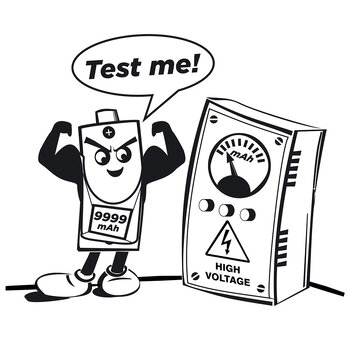- Tips
- technology
- Frequently Asked Questions
- Tests
- mAh capacity
- Rated Capacity
- everActive
- comparison
- Durability of rechargeable batteries
- Efficiency of rechargeable batteries
- battery voltage
- Accumulated energy
- Batteries vs rechargeable batteries
- LR03 AAA
- LR6 AA
- eneloop
- AG13 LR1154 LR44
- Delta V
- Charge Cycles
- internal resistance
- charge level
- CR 2032
- memory effect
- accredited test
- SR44 357
- Hearing Batteries 675
- SR626 377
- Watch Batteries
- Polarity
- Mah
- passivation
- LS 14250
- LS 14500
I have a new charger with mAh measurement – does this mean that I can check the capacity of the battery?

During charging, we can only assess how many mAh the charger has "pumped" into the battery to assess that it is already full. If we try to charge a battery that has already been charged, this measured value can be very low, having no relation to the full, nominal usable capacity.
While in the case of Li-ion cells often the mAh used for charging is converted practically 1:1 into the actual mAh of usable capacity, obtained later from discharge, in the case of Ni-MH cells the information about the mAh from charging carries very little utility value. This is due to the fact that when charging Ni-MH cells, there are some significant losses, which are not constant and can vary significantly between different batteries, or depending on the temperature / environmental conditions.
To sum up, the mere fact of measuring mAh in a charger does not determine its ability to measure the actual, usable capacity.
Only a correct, full measurement of discharge capacity allows for a reliable assessment of the quality of the battery, or verification of the manufacturer's credibility in terms of the declared nominal capacity of the tested cell.
Discharging will also be necessary to check the capacity of the disposable battery, or to assess the self-discharge effect of the battery. Without this function, it is impossible to perform extended diagnostics in order to, for example, solve compatibility problems between the batteries and the device.
We describe the topic of correct capacity measurement in more detail in another post:
Copying the content of the article or its part without the consent of a representative of Baltrade sp. z o.o. is prohibited.